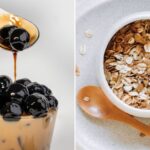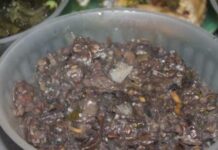Summer poses unique challenges for people with diabetes as they strive to maintain stable blood sugar levels. High temperatures, disrupted routines, and external factors can cause blood glucose levels to fluctuate.
Despite diligent management during spring or autumn, some patients experience unpredictable blood sugar spikes and dips during the summer months. Endocrinologists attribute these fluctuations to seemingly harmless habits that complicate diabetes control during this season.
Why Does Summer Affect Blood Sugar Levels?
Elevated temperatures can stress the body, stimulating hormones that increase blood glucose. Additionally, vasodilation and increased blood flow to the skin accelerate insulin absorption, heightening the risk of hypoglycemia.
Profuse sweating without adequate rehydration can lead to dehydration, causing a false elevation in blood sugar levels. Electrolyte imbalances further diminish insulin’s effectiveness. Eating less due to the heat or, conversely, consuming excessive fruit, sugary drinks, and cold beer can also disrupt blood glucose levels.
Reduced physical activity, disrupted sleep patterns, and emotional volatility create a perfect storm for erratic blood sugar control during the summer.
5 Unassuming Habits That Undermine Blood Sugar Control
1. Irregular sleep patterns can lead to nocturnal hypoglycemia: Summer heat may disrupt sleep schedules, with some opting to stay up late to enjoy the cooler evening temperatures. However, insufficient sleep directly impacts the body’s glucose metabolism. Moreover, excessive night sweating could indicate nocturnal hypoglycemia, so it’s important to monitor blood sugar levels before bed and take necessary precautions.

2. Emotional volatility reflects in blood sugar levels: Stress, irritability, and anger—common emotions during hot summers—can trigger rapid increases in blood glucose by stimulating the sympathetic nervous system. To break this cycle, patients should cultivate emotional regulation skills through meditation, listening to soothing music, gentle exercises, or confiding in loved ones.
3. Inadequate hydration—a subtle yet significant issue: Some individuals only drink water when they feel thirsty. However, this habit can lead to chronic dehydration, especially in the elderly, whose thirst sensation may be diminished. It is recommended to consume approximately 1.5–1.7 liters of water per day, preferably plain water, distributed evenly throughout the day. Avoid substituting water with sugary drinks, strong tea or coffee, or alcoholic beverages.
4. Neglecting personal hygiene increases infection risk: Summer is a breeding ground for bacteria, and diabetics are particularly susceptible to infections. Inadequate skin, urinary, and respiratory hygiene can lead to infections, which may result in acute complications like diabetic ketoacidosis. Additionally, summer foods are more prone to spoilage, and food poisoning can trigger blood sugar spikes due to the body’s stress response.
5. Discontinuing or altering medication without medical advice is hazardous: Out of concern for hypoglycemia during reduced food intake, some patients may stop taking their medication or reduce the dosage without consulting their doctor. This can lead to severe complications and even endanger their lives, especially for those on insulin therapy. Any changes to medication should be made under medical supervision.
Nutritional Strategies for a Safer Summer
While summer favorites like fruit, ice cream, sugary drinks, and cold beer are tempting, diabetics must exercise caution. Restricting food intake during the day and overindulging at night with alcoholic beverages, grilled foods, and fried snacks is a recipe for blood sugar spikes. Instead, adopt a balanced diet with smaller, frequent meals, emphasizing green vegetables, whole grains, and low-sugar dairy. Opt for sugar-free yogurt or soy milk to satisfy your sweet tooth without compromising blood glucose levels.
Insulin Storage During Summer: Don’t Be Complacent
Insulin is temperature-sensitive. Unopened vials should be stored in the refrigerator (2–8°C) away from direct sunlight and food. Once opened, insulin can be kept at room temperature (below 30°C) for 4–6 weeks. Do not freeze insulin or leave it in a hot car or luggage when traveling without proper insulation. Use a cooling bag with ice packs, ensuring the ice doesn’t come into direct contact with the medication, to transport insulin safely.
Summer Exercise: Timing and Recommendations
Physical activity remains crucial, but it’s essential to choose the right time and type of exercise. Opt for morning or evening workouts, avoiding the hottest hours of the day. Aim for 20–30 minutes of gentle exercises like walking, swimming, or tai chi, five times a week. Remember to hydrate properly before and during exercise, and allow yourself to rest and acclimate to temperature changes after working out before entering air-conditioned spaces or taking a warm shower.
Blood Sugar Control in Summer: A Marathon, Not a Sprint
Summer is a challenging season for diabetics, but by recognizing risk factors and taking proactive measures, stable blood sugar levels are achievable. Managing a chronic condition requires patience and perseverance. Adhering to nutritional guidelines, staying active, taking medication as directed, and prioritizing self-care are the keys to navigating summer safely and healthily.
“The Unassuming Calcium-Rich Veggie: Packing a Punch with Twice the Calcium of Soy and Seven Times that of Chicken”
During the season, snow peas offer a delightful crunch and natural sweetness that makes them incredibly versatile in the kitchen. One of the most beloved ways to enjoy them is as a filling for dumplings or buns – a combination that results in a fragrant, nutritious, and refreshing treat with the perfect blend of flavors.
6 Starchy Foods That Are Higher in Carbohydrates Than White Rice, and May Lead to Weight Gain if Overconsumed, Especially the First One.
“For years, white rice has been demonized in the weight-loss community, with many believing that cutting it out of their diets will lead to shedding pounds. However, what many don’t realize is that several other staple foods contain even higher amounts of starch, which can contribute to weight gain if consumed excessively. It’s time to uncover the truth and understand that a balanced diet is about moderation and awareness of the nutritional content of the food we eat.”
“6 Amazing Health Benefits of Drinking Bitter Gourd Juice”
Bitter gourd juice is a nutritional powerhouse, offering a plethora of health benefits. This humble vegetable boasts an impressive nutritional profile, packed with essential vitamins and minerals that support overall wellness. From boosting immunity to regulating blood sugar, bitter gourd juice is a natural remedy with numerous advantages. Discover the fascinating world of bitter gourd juice and explore the myriad ways it can enhance your health and well-being.















